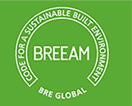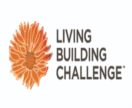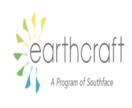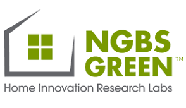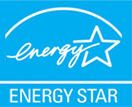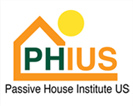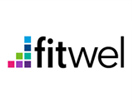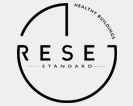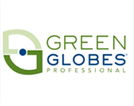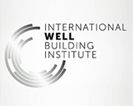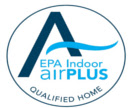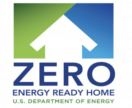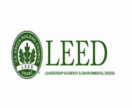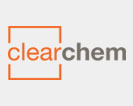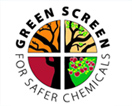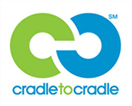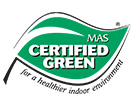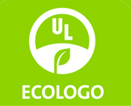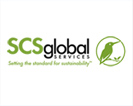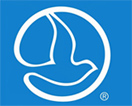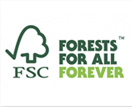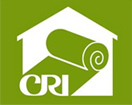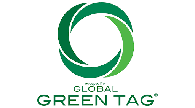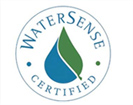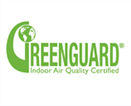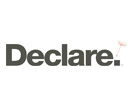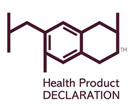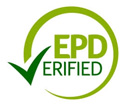Introduction: Green Building Certifications
A certification is an assurance made either by a company or an outside entity regarding the characteristics of a product or service, or a claim that has been made about the product or service. At a time when sustainable materials, services and information are expanding exponentially, certifications provide one potentially valuable data point for evaluating green building products and services. Certifications can help particularly when there is a need for technical verification that a certain goal or standard has been met, as most buyers simply don’t have the expertise or resources to evaluate marketing claims. Certifications can be made narrowly or widely, and by different entities. As with any information used to make important decisions, it’s wise to understand carefully the assurance(s) being made and by what entity.
Certifications fall into one of three categories that help define how close the entity is that provides the certification to the entity with the certification interest: first party, second party, and third party. Generally speaking, many green building professionals favor third-party certifications, as a non-related entity can in theory most likely provide an unbiased opinion. However, others might point out that certification can be quite expensive, and that first and second party certification programs provide more opportunities and more affordable access for smaller businesses. There is a concern that when certification is too difficult or expensive, some quite sustainable businesses feel shut out by a non-level playing field.
○ First-party certifications are made by the body providing the product or service. ○ Second-party certifications are made by a partnering party with some interest in the company. ○ Third-party certifications are made by an independent entity with no vested interest in the product or service.Certifications can also be categorized into single and multi attribute. Single attribute claims can provide valuable information, but for a more narrow claim one may wish to learn more about other characteristics about the product or service. For example, the buyer might still want to investigate the health aspects of a product that is certified 100% recycled materials. While the use of recycled materials is a positive attribute, the item may not meet all the other criteria for a product the person or organization might be seeking. Toxicity or durability, or a host of other factors may also have to be evaluated. Multi attribute claims address more characteristics, or even attempt to make a global generalization about a product or service. Regardless, just seeing a label alone does not answer all questions - and the more informed buyer can make more confident decisions.
Certifications can also be categorized by the subject being certified. Product and service certifications are specific to the items or services described, while whole building certifications apply to parameters met by an entire structure. Whole building certifications also divide into categories according to new construction, renovations, and into several types of residential, commercial and institutional structures.
We’ve listed some highly regarded certifications below for whole buildings, and products. We expect to expand this list over time to include selected professional accreditations and transparency tools that help verify health and environmental factors. For all of the certifications Rate It Green, currently hosts, please visit the Green Building Certification, Labels & Transparency section of our green building directory.
Selected Whole Building Certifications
Building Research Establishment’s Environmental Assessment Method (BREEAM)
Building assessments are performed by BREEAM licensed organizations, with buildings receiving a score out of five available stars. The BREEAM assessor works with a builder through each building stage, giving credits for meeting certain benchmarks of sustainability. Some of these performance standards include environmental, social, and economic. Since it was developed, more than 100,000 buildings have been rated by BREEAM in over 86 different countries. BREEAM assigns an assessor to each project as a third-party certifier.
International Living Future Institute: Living Building Challenge
The Living Building Challenge is an international sustainable building certification created in 2006 by the International Living Future Institute. This certification tool measures sustainability in the built environment and applies to both new and existing buildings of various sizes. The program offers specific types of certifications such as a Petal Certification, Core Green Building Certification, Zero Energy Certification, and Zero Carbon Certification. All certification projects have a twelve-month performance period and are audited by a third party before they receive a credential.
EarthCraft
EarthCraft is a high-performance building certification program developed by Southface and the Greater Atlanta Home Builders Association. This verification standard addresses the challenging energy, water, and climate conditions of the Southeast. EarthCraft House is a blueprint for single family homes that creates and maintains energy- and resource-efficient living environments. EarthCraft Multifamily addresses environmental performance, indoor air quality, building durability, comfort and affordability. Along with residential homes, EarthCraft also certifies light commercial spaces, historical preservation, and community certifications.
National Green Building Standard (NGBS)
The NGBS is a residential building standard that demonstrates high-performance in six areas: lot design and development, resource efficiency, water efficiency, energy efficiency, indoor air quality, and building operation and maintenance. The four levels of certification are Bronze, Silver, Gold, and Emerald. During the design process, NGBS reviews certification requirements before lot development and incorporates high-performance green amenities into the project. During construction, NGBS requiresthat builders document their green construction practices and products, schedule a rough inspection with a verifier, and schedule a final inspection with a verifier.
ENERGY STAR for Buildings
The ENERGY STAR program is a US government-run organization that strives for energy-efficient products and infrastructure by offering a range of certifications and rating systems. ENERGY STAR partners with the Environmental Protection Agency (EPA), using EPA-approved guidelines for homes, commercial buildings, and industrial plants. Buildings are reviewed according to a green rating system, and are assessed a 1-100 ENERGY STAR score. This marker compares a property’s energy performance to similar properties nationwide.
Passive House Institute US (PHIUS)
The Passive House Institute is a third-party certification that combines a thorough passive house design verification protocol with a stringent Quality Assurance/ Quality Control (QA/QC) program. PHIUS works to set standards for low energy buildings, along with providing information and training for green building companies and professionals. Passive House partners with the US Department of Energy (DOE) to incorporate the Zero Energy Ready Home (ZERH) program which turns all homes and units into high performance homes so that all annual energy consumption can be offset with renewable energy. Passive House homes use solar and superinsulation to build extremely air-tight houses that are incredibly energy efficient. While PHIUS does occasionally certify renovations, it is mainly used for new projects.
Fitwel
Fitwel is a third party certification system developed by the Center for Active Design. Users can certify a single project or an entire portfolio, signaling that wellness is prioritized in the design, development, and operation of certified buildings and communities. Not only will a certified building ensure its position on the frontier of sustainability, but it will also improve the health of employees, visitors, or residents of the building. The Fitwel standard provides scorecards with 55+ evidence-based design and operational strategies that enhance buildings by addressing a broad range of health behavior and risks for buildings and infrastructure. The Fitwel assessment team uses a verified approach to evaluate each project through a double-blind independent reviewing process.
RESET
RESET uses real time monitoring data to ensure that indoor air quality is safe and healthy at all times. Data is gathered through air monitors that measure CO2, particulate matter, TVOC, temperature, and relative humidity. Results stream to a cloud that can be viewed from any computer or mobile device. As long as the building maintains healthy air quality levels, it remains certified. The RESET Air Standard can be applied to both Commercial Interiors and Core and Shell. RESET Air for Commercial Interiors tracks and communicates the health performance of interiors to occupants, while RESET Air for Core and Shell tracks and communicates the health performance of entire buildings to prospective tenants.
Green Building Initiative: Green Globes
Green Globes is a rating system designed to allow building owners to select which sustainability features best fit their projects with a customized approach. Rather than using a universal scale or standard that could be applied to any project, Green Globes Certification provides personalized assistance to produce the most efficient buildings depending on one’s project goals. Buildings seeking Green Globes certification must earn 350 of 1000 available points to be recognized, with more prestigious certifications requiring higher scores. Assessors at Green Globes undergo the certification process by reviewing documentation, answering questions, conducting on-site building assessments, and offering suggestions.
WELL Building Standard
Founded by Delos Living LLC, the WELL Certification encompasses seven distinct areas of health and wellness for buildings: air, water, nourishment, light, fitness, comfort and mind. In the certification process, WELL professional assessors will grade each concept independently on a numerical scale. If all preconditions are certified, WELL certification is applied to the building. The WELL Building Standard currently has over 4,360 projects encompassing over 597 million square feet across 62 countries. WELL certified projects are third-party certified, with options for residential and commercial buildings.
Indoor airPLUS
Indoor airPLUS is a certification program that aims to improve the quality of indoor air by requiring construction practices and product specifications that minimize exposure to airborne pollutants and contaminants. Indoor airPLUS was created by EPA and builds on the standards of ENERGY STAR’s requirements for new homes. Construction specifications include the installation of moisture control systems, HVAC systems, combustion-venting systems, radon-resistant construction, and low-emitting building materials. To become Indoor airPLUS certified, a builder must first design a home to earn the ENERGY STAR Certified Home label.
Zero Energy Ready Homes (ZERH)
The U.S. Department of Energy (DOE) manages certifications for assessed green homes called Zero Energy Ready Homes (ZERH). The goal of this program is that a green home has the potential to generate as much energy as it uses. When homes add a modest size PV solar panel system or other clean energy generation system, a home can even generate more energy than it uses (this home would then be called net positive). To be certified Zero Energy Ready Home, the property must be no less than 40-50% more energy-efficient than a typical new home of the same size, not including energy potentially saved from solar panels. ZERH requires that the home also meets US EPA ENERGY STAR home and Indoor airPLUS certification standards, which are incorporated into the ZERH program. Other certification requirements for ZERHs include energy-efficiency, indoor air quality, advanced construction methods, quality, and durability.
Leadership in Energy and Environmental Design (LEED)
Developed by the United States Green Building Council, LEED is the largest third-party rating system in the world. There are five different categories of LEED certifications: Building Design and Construction, Interior Design and Construction, Building Operations and Maintenance, Neighborhood Development, and Homes. In addition, LEED offers certifications for entire cities or sub-sections of a city’s water consumption, energy use, and transportation services. LEED Zero is a certification for projects that strive for net zero goals in carbon and/or resources. Projects pursuing LEED certification earn points for various green building strategies across several categories based on the number of points achieved. Levels include Certified, Silver, Gold, and Platinum.
Selected Product Certifications
ClearChem
ClearChem is a first-party transparency objective that is designed for builders who are attempting to earn indoor air quality credits by incorporating low-emitting materials in a high-performance building. In order for a builder to meet indoor pollutant control requirements, documentation is necessary. ClearChem provides self-declared certificates of conformity for building products that have been tested for emissions of volatile organic compounds (VOCs) and that comply with the acceptance criteria in CDPH Standard Method V1.2. The ClearChem program encompasses three elements: ClearChem Standard BkA-CC-01, the ClearChem Self-Declaration, and the ClearChem Product Registry.
GreenScreen
GreenScreen for Safer Chemicals is an independent, non-profit certification standard that promotes the use of safer chemicals in products and manufacturing. Developed by Clean Production Action, GreenScreen offers certification to both private companies and governmental organizations. Through testing procedures, GreenScreen identifies chemicals of high concern and finds safer alternatives. Products are certified Bronze, Silver, or Gold depending on their positions in the GreenScreen benchmarking criteria. Textile chemicals, building materials, and firefighting foam are common GreenScreen verified products.
Cradle to Cradle Products Innovation Institute
Cradle to Cradle is a measure of safer, more sustainable products made for the circular economy. Companies use Cradle to Cradle to certify a myriad of building products and other items such as flooring, windows, t-shirts, water bottles. To receive certification, products are assessed for environmental and social performance across five categories: material health, material reuse, renewable energy and carbon management, water stewardship, and social fairness. Then, the product is assigned an achievement level (Basic, Bronze, Silver, Gold, or Platinum) for each category.
MAS Certified Green
MAS is an emissions testing laboratory that helps companies enter the green market with low VOC-emitting products. The MAS Standard was composed in response to concerns over health effects from exposures to VOC emissions inside buildings, schools, and residencies. Construction materials, paints and finishes, flooring, and furniture are the most common certified products by MAS. The Business and Institutional Furniture Manufacturer’s Association (BIFMA) has built on the MAS Standard to develop additional testing protocols and standards for furniture.
ECOLOGO
Founded by UL, EcoLogo certifies products, services, and packaging via voluntary, multiattribute, life cycle-based assessments. The EcoLogo certification indicates that a product has undergone a process of scientific testing and third-party auditing to comply with sustainability criteria such as materials, energy, manufacturing and operations, health and environment, product performance and use, and product stewardship and innovation. Products certified by EcoLogo include electronics, building materials, and cleaning supplies.
SCS Global Services
SCS Global Services is an international, third-party certifier for environmental, sustainability, and food safety performance claims. SCS offers its services in the forestry, green building, energy, agricultural, fisheries, and consumer products sectors. Both companies and governments partner with SCS to achieve goals in environmental protection, social and ethical responsibility, and product quality and safety. Some prominent SCS verifications include Non-GMO Project, Gluten-Free, Carbon Neutral, FSC Chain of Custody, and Environmental Product Declarations (EPD).
ENERGY STAR for Buildings
ENERGY STAR products are assessed through a single-attribute certification process which provides third-party testing regarding energy efficiency. The main categories of verified products include appliances, building products, commercial food service equipment, data center equipment, electronics, heating and cooling, lighting, office equipment, and water heaters. Products that earn the ENERGY STAR label are independently certified to meet strict standards for energy efficiency set by the EPA.
South Coast Air Quality Management District (SCAQMD)
SCAQMD is the air pollution control agency for Orange County, Los Angeles, and surrounding urban regions. SCAQMD offers several certification programs to promote clean air products and services such as solvents and commercial cleaners. To become certified, products must meet specific environmental qualifications, while services must demonstrate expertise in the preparation of permit applications by passing the CPP exam. In addition to certification, SCAQMD also offers compliance training for federal, state, and local clean air regulations.
Forest Stewardship Council (FSC)
FSC certification is a voluntary, market-based approach to improve forest practices worldwide. The Chain of Custody certification ensures that all products come from responsibly managed forests that provide environmental, social and economic benefits. Between the forest and the final user, products may undergo many stages of processing, manufacturing and distribution. FSC Chain-of-Custody certification traces the path of products from forests through the supply chain, verifying that FSC-certified material is identified or kept separated from non-certified material throughout the chain. Certifiers are independent of FSC which makes this a third-party verification.
The Carpet and Rug Institute (CRI)
CRI provides information about carpet and rug trends, health benefits, and environmental efforts. Since carpets and rugs improve indoor air quality, these products benefit both human health and the environment. CRI offers Green Label and Green Label Plus certification for carpets, adhesives and cushion products with low VOC emissions.
Global GreenTag
Global GreenTag is an independent ecolabel that assures every certified product is fitness tested to adhere to high sustainability standards. Global GreenTag uses LCRate to score its products under six criteria: greenhouse gas emissions, health and eco toxicity, life cycle analysis, social responsibility and labor conditions, synergy, and biodiversity. The four levels of attainment are bronze, silver, gold, and platinum. Along with certified products, GreenTag also released GreenRate, which is a program for green design, procurement, facilities management, and cleaning professionals seeking to use sustainable products. Global GreenTag requires full disclosure of every product ingredient and process to highlight full transparency.
Watersense
WaterSense is an EPA-run program that encourages water conservation by providing certified labels to products that demonstrate exemplary water efficiency. To earn the label, products must use 20% less water than the amount given by baseline EPA specifications while still meeting the performance standards of less efficient models. The products must be tested by a third party entity before they receive the label, which reinforces transparency and credibility. Common WaterSense-certified products include showerheads, sprinklers, and toilets.
GREENGUARD
GREENGUARD certification ensures that a product has met standards for low emissions of volatile organic compounds (VOCs) into indoor air. Low amounts of chemical emissions provide manufacturers with credible tools to legitimize and promote their sustainability efforts. Because indoor air quality (IAQ) is directly linked to human health, it is recognized as a main concern in homes, schools, healthcare environments, and commercial spaces. GREENGUARD certified products ensure that these locations are safe and healthy. There are two types of certification: GREENGUARD Certification and GREENGUARD Gold. GREENGUARD Certification assesses office furniture and commercial building products, while GREENGUARD Gold includes health-based criteria for additional chemicals, making these certified products acceptable for use in schools and hospitals.
Selected Transparency/Documentation Tools
Declare Label
Declare is a transparency platform and product database that lists where a product comes from, what it is composed of, and how it is disposed of. The Declare label confirms a product’s compliance with CDPH or an equivalent emissions standard. This offers transparency to clients about the lifetime impact of a product they are purchasing. The International Living Future Institute collaborates with third-party assessors to provide manufacturers with third-party verification of Declare label claims. This offers an additional level of risk mitigation through the review of ingredients, supply chain information, and Declare label claims.
Health Product Declarations (HPD)
An HPD is a health standard specification for products in the built environment. HPD’s are composed of instructions for the accurate, reliable, and consistent reporting of product contents and associated health information. These documents identify any potentially harmful chemicals that could be present in a product. The list of chemicals in a product are compared to several lists of chemicals of concern, and any chemicals that match are shown in the HPD. The declaration is especially stringent on the exemption of VOC emissions. The manufacturers can use HPD’s to disclose the properties of their products to customers.
Environmental Product Declarations (EPD)
An EPD is a standardized document that informs customers of the environmental impact of products or systems. EPD’s are based on lifecycle assessments, which are a measure of lifetime energy use and impact, and include considerations for the impact of raw material acquisition, energy use, energy efficiency, chemical composition, emissions, and water generation. Though the declaration is meant to be informative, it does not necessarily guarantee that the product or system is environmentally superior to alternatives. Examples of EPD products include construction materials, food, and vehicles.

